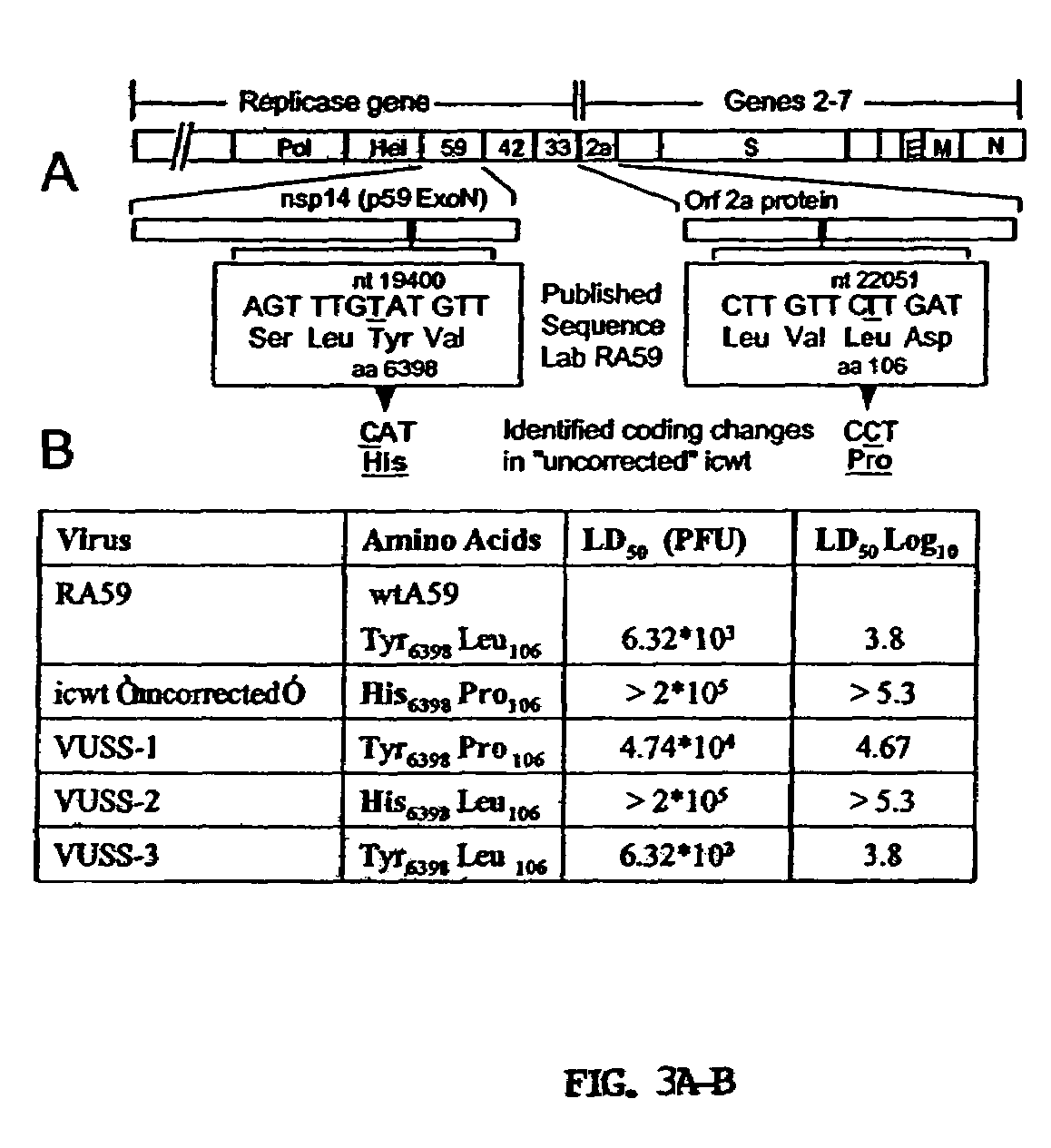Live attenuated coronavirus vaccines
a coronavirus and attenuated technology, applied in the field of microbiology, immunology and virology, can solve the problems of limited human coronavirus studies, severe coronavirus diseases in non-human species, and devastating domestic livestock such as pigs, cattle and chickens
- Summary
- Abstract
- Description
- Claims
- Application Information
AI Technical Summary
Benefits of technology
Problems solved by technology
Method used
Image
Examples
example 1
Materials and Methods
[0126]Viruses and cells. Mouse hepatitis virus lab strain RA59 was the wildtype control in all experiments. Delayed brain tumor (DBT) cells and baby hamster kidney cells expressing the MHV receptor (BHK-MHVR) were grown in Dulbecco's modified Eagle medium (DMEM) containing 10% fetal calf serum (FCS). The BHK-MHVR cells were grown under G418 selection (0.8 mg / ml).
[0127]Sequencing MHV cDNA fragments. The infectious clone MHV cDNA fragments (A-G) were sequenced with a set of primers designed from the MHV genome (NCBI accession: NC001846). Sequencing primers were created every 600 bp, beginning with the 5′ end, of both the sense and antisense strands. These primers generated overlapping sequences covering the cDNA clones at least twice, and up to four times in certain regions. M13 forward and reverse primers were also used to sequence the insert-vector junction of the pCR-XL-Topo (Invitrogen) or pSMART-LCAmp (Lucigen) parent vectors. The sequencing was performed wit...
example 2
Results
[0133]icMHV virulence attenuated in mice. The inventor's lab has previously shown that a wild-type MHV infectious clone virus (icMHV) demonstrated a wild-type phenotype in growth, protein processing, and RNA synthesis assays in DBT cell culture. To determine whether icMHV is virulent in mice, 105 pfu of both wild-type A59 and icMHV were injected into mice. 100% of mice inoculated with wild-type lab strain A59 eventually died. Surprisingly, none of the mice inoculated with icMHV died or became ill, suggesting that icMHV was attenuated. It was hypothesized that an unaccounted mutation in the icMHV was responsible for attenuating the virus.
[0134]Identification of possible virulence attenuating mutations in icMHV. To identify all possible mutations in the icMHV that could cause this lack of virulence, the inventor sequenced the entire cDNA genome of the infectious clone. The cDNA constructs (A-G) of the MHV infectious clone were sequenced bi-directionally using overlapping sets o...
PUM
| Property | Measurement | Unit |
|---|---|---|
| diameter | aaaaa | aaaaa |
| pH | aaaaa | aaaaa |
| stability | aaaaa | aaaaa |
Abstract
Description
Claims
Application Information
 Login to View More
Login to View More - R&D
- Intellectual Property
- Life Sciences
- Materials
- Tech Scout
- Unparalleled Data Quality
- Higher Quality Content
- 60% Fewer Hallucinations
Browse by: Latest US Patents, China's latest patents, Technical Efficacy Thesaurus, Application Domain, Technology Topic, Popular Technical Reports.
© 2025 PatSnap. All rights reserved.Legal|Privacy policy|Modern Slavery Act Transparency Statement|Sitemap|About US| Contact US: help@patsnap.com



